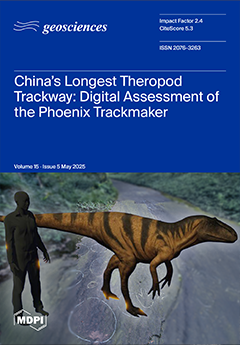Mountain regions are particularly sensitive and vulnerable to the impacts of climate change. Over the past three decades, mountain temperatures have risen significantly faster than those in lowland areas. The Hindu Kush–Karakoram–Himalaya region, often referred to as the “water tower of Asia”, is
[...] Read more.
Mountain regions are particularly sensitive and vulnerable to the impacts of climate change. Over the past three decades, mountain temperatures have risen significantly faster than those in lowland areas. The Hindu Kush–Karakoram–Himalaya region, often referred to as the “water tower of Asia”, is the largest freshwater source outside the polar regions. However, it is currently undergoing cryospheric degradation as a result of climatic change. In this study, the Normalized Difference Glacier Index (NDGI) was calculated using Landsat and Sentinel satellite images. The results revealed that glaciers in Chitral, located in the Eastern Hindu Kush Mountains of Pakistan, lost 816 km
2 (31%) of their total area between 1992 and 2022. On average, 27 km
2 of glacier area was lost annually, with recession accelerating between 1997 and 2002 and again after 2007. Satellite analyses also indicated a significant increase in both maximum (+7.3 °C) and minimum (+3.6 °C) land surface temperatures between 1992 and 2022. Climate data analyses using the Mann–Kendall test, Theil–Sen Slope method, and the Autoregressive Integrated Moving Average (ARIMA) model showed a clear increase in air temperatures from 1967 to 2022, particularly during the summer months (June, July, and August). This warming trend is expected to continue until at least 2042. Over the same period, annual precipitation decreased, primarily due to reduced snowfall in winter. However, rainfall may have slightly increased during the summer months, further accelerating glacial melting. Additionally, the snowmelt season began consistently earlier. While initial glacier melting may temporarily boost water resources, it also poses risks to communities and economies, particularly through more frequent and larger floods. Over time, the remaining smaller glaciers will contribute only a fraction of the former runoff, leading to potential water stress. As such, monitoring glaciers, climate change, and runoff patterns is critical for sustainable water management and strengthening resilience in the region.
Full article





